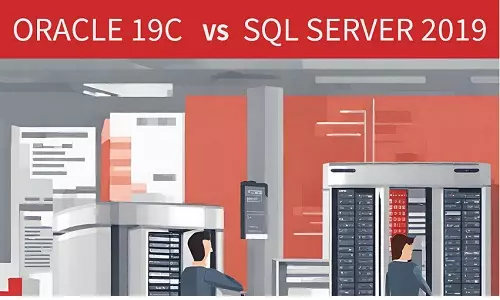WAMP vs LAMP: Differences and Similarities between WAMP and LAMP
How is WAMP different from LAMP? Which one is better between WAMP and LAMP?

WAMP and LAMP are common software stacks used in the development and deployment of web applications, also known as websites. Both WAMP and LAMP are installed on a PC to help web designers and developers test applications and website features on their local PCs before deploying them to the internet for other users to access.
To develop and deploy a website successfully, there are a few requirements that make up the web development stack requirement. These are:
-
Operating system running on a PC
-
Web Server
-
Database
-
Script interpreter
Both WAMP and LAMP bring on board these basic stack requirements bundled up as a single application. WAMP stands for Windows, Apache, MySQL, and PHP. On the other hand, LAMP stands for Linux, Apache, MySQL, and PHP. Both WAMP and LAMP use the Apache HTTP server to serve web pages, MySQL as the database management system, and PHP as the scripting language of choice. However, they have different variations. That brings us to the purpose of this article; discussing the fundamental differences between WAMP and LAMP.
WAMP vs LAMP: The difference between WAMP and LAMP
Therefore, from their definitions, we can tell the fundamental differences between WAMP and LAMP; the supported operating systems. While WAMP is installed on Windows OS PCs, LAMP is installed on Linux OS PCs.
Another core difference between WAMP and LAMP is the supported scripting languages. WAMP supports only the PHP (Hypertext Preprocessor) scripting language while LAMP supports PHP, PERL, and Python scripting languages. Therefore while WAMP represents Windows, Apache, MySQL, and PHP, LAMP is also used as an acronym for Linux, Apache, MySQL, PHP/PERL/Python.
WAMP vs LAMP - Which should I Use?
If you are a beginner in web development, first know that both LAMP and WAMP are easy to install and run as they are both lightweight application bundles.
If you are on a Windows PC, you can start with WAMP. In addition to being easy to install, WAMP installs with default configuration on services. Within minutes of downloading the WAMP server bundle, you can be running a web server and develop websites on your PC. The PHP scripting language is used in millions of websites and is supported by all hosting providers. PHP is regarded as the default server scripting language for any web developer.
If you are on a Linux OS and understand how to install applications from repositories, then LAMP is the best option for you as a beginner. In addition to the PHP scripting language, the LAMP bundle also supports the PERL and Python programming languages.
However, if you have access to both Windows and Linux operating systems, then WAMP is considered the easiest to install and configure, thanks to the GUI (graphical user interface) component.
Summary Similarities Between WAMP and LAMP
| WAMP | LAMP |
|---|---|
| Free and Open Source | Free and Open Source |
| Easy to Install | Easy to Install |
| Supports MySQL Databases | Supports MySQL Databases |
| Supports Apache Web Server | Supports Apache Web Server |
Summary Differences Between WAMP and LAMP
| WAMP | LAMP |
|---|---|
| Built for Windows Operating System | Built for Linux Operating System |
| Supports PHP Scripting Language | Supports PHP, Python, and PERL Scripting Languages |






